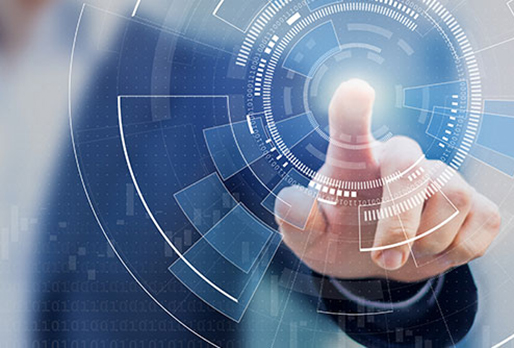The current situation has led many organizations to acknowledge that a large part of their workforce can function just fine outside of the traditional offices. Some of the biggest organizations are now planning to keep around 50% of their employees in a permanent work from home (WFH) mode*. Such new norms are going to trigger a series of changes in the way businesses strategize, operate and grow. And to maintain an environment of productivity, collaboration, and learning, the boundaries between physical and virtual are being redefined with the help of technology. Technological trends such as virtual work boards for collaboration, always-on video conferencing, digital documentation and signatures, cloud-based storage and software, and virtual onboarding etc. are quickly transitioning from futuristic ideas to standard practices.
Technology is rewriting the future of work
Technology is changing at a breakneck pace, evolving in its use cases to encompass people, processes and products. Technologies such as IoT, AI, and VR/AR, and delivery models such as Device-as-a-Service are becoming vital to keep up with the smart workspace’s requirement of mobility, flexibility, and connectivity. Here are some technology trends that will be seen at the helm of disruption and innovation in the new normal.
Automation and AI
Enterprise spending on AI systems will reach $1.6 billion in 2020, according to Sales Edge, India’s only growth intelligence platform. The use of AI will allow organizations to extract insights, predict outcomes, make recommendations and optimize decision-making.
Make your inbox more interesting.
Subscribe to our newsletter.In a use case that is about to transform the healthcare industry, clinicians can connect securely and privately with patients in real-time through AI-powered platforms where the health history of individuals is constantly updated as AI learns and remembers people’s behaviors and preferences. This also helps doctors make personalized recommendations that are up to date.
Other potential use cases of AI include contactless attendance tracking with facial detection technology, enhanced credit card fraud detection, contextualized customer service with 'intelligent' chat-bots, workflow automation, creating personalized communication, optimizing supply chain and inventory control, and anticipation and fulfilment of customer needs.

Augmented Reality and Virtual Reality (AR & VR)
AR & VR are one of the biggest disruptors to the workplace of the future. New video conferencing technology powered by VR will allow people from different locations to talk to one another while being virtually in the same conference room or office cubicle.
AR is already proving essential when it comes to training staff within industries like medicine, retail, manufacturing, and EdTech. EdTech platforms powered by AR will allow students to perform open-heart surgeries without practising on real-life people or dummies. Even in the retail industry, shoppers can view specifications and prices of different products just by pointing their smartphones at products with the help of AR.
IoT
IoT represents the intersection of many modern technologies working together - sensors, cloud computing, and machine learning. According to Sales Edge, the IoT market will be worth $1.7 billion by 2020, and the future of work will be a big contributor to this market. The three major benefits of introducing IoT to the workplace will be in data, communication, and automation.
To illustrate with an example, companies experiencing production slowdowns will be able to examine their manufacturing process and identify the exact problem areas to focus on, with the help of embedded IoT systems. In smart workspaces, employees can quickly find parking and open seats or cabins with the help of IoT-enabled sensors. Even when it comes to customer support, users can quickly troubleshoot or obtain information about a specific product with advancements in chat-bots powered by IoT.
There are numerous moving parts in the future of workspace - from a multi-generational workforce to the advent of AI. As the rules of work change, management, compliance, privacy and security issues are important areas that companies will need to consider as well. Only technological trends that cut across all these requirements, and can also work together seamlessly, will continue to dominate.
*https://timesofindia.indiatimes.com/business/india-business/india-inc-may-keep-50-of-employees-in-wfh-mode/articleshow/76250102.cms


